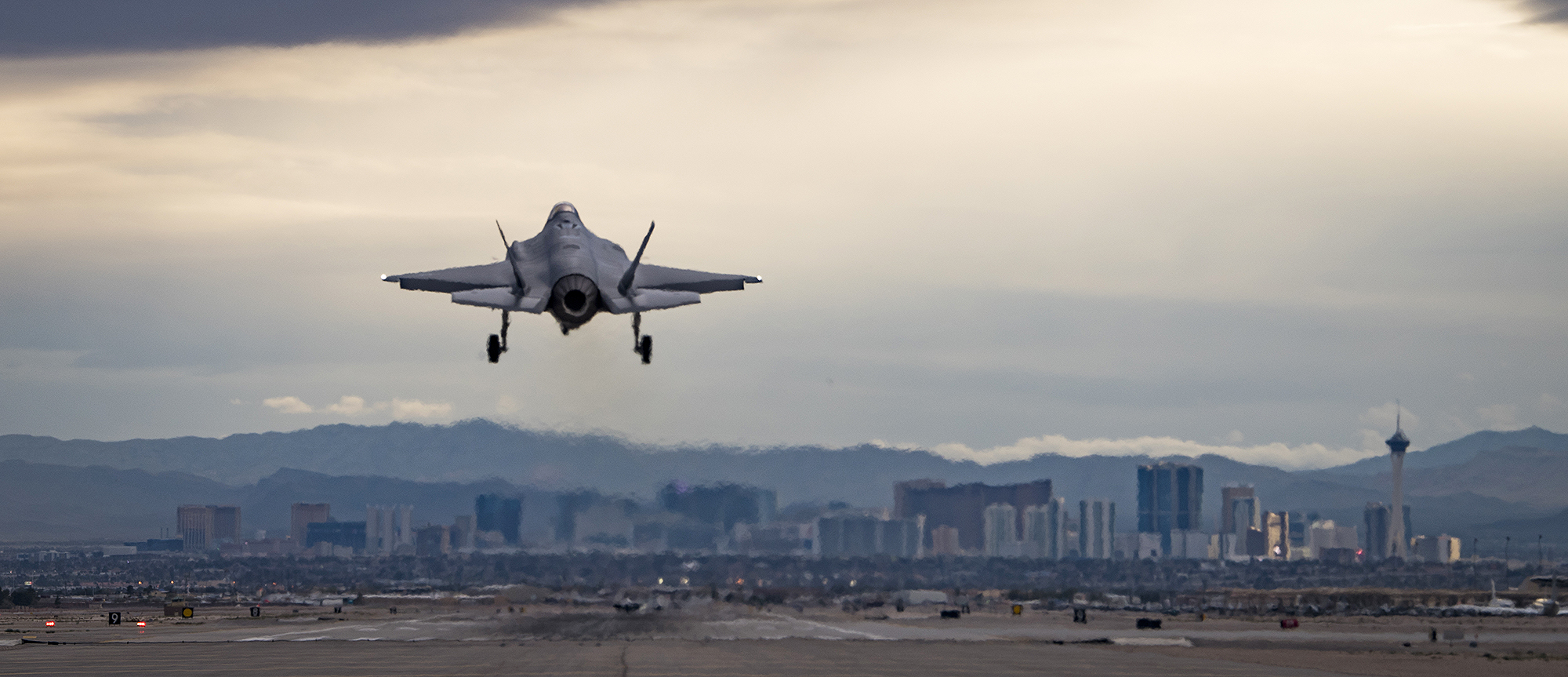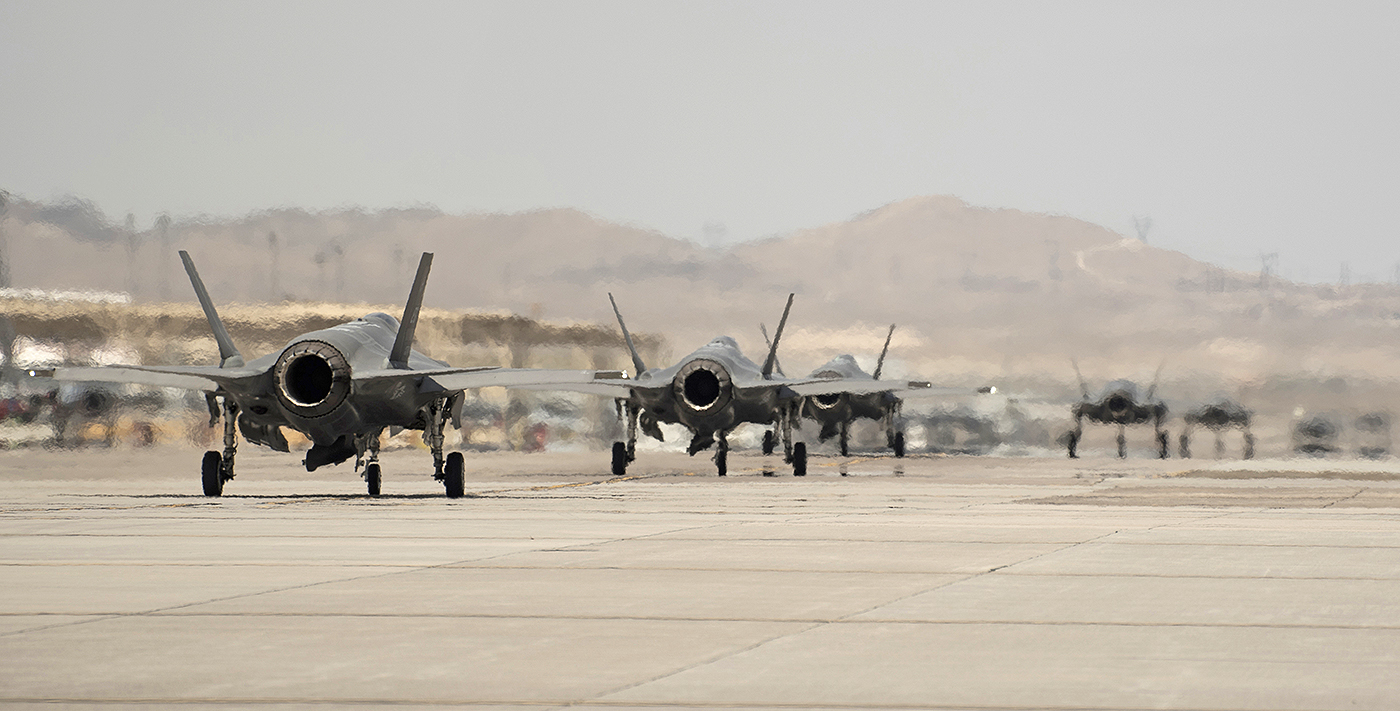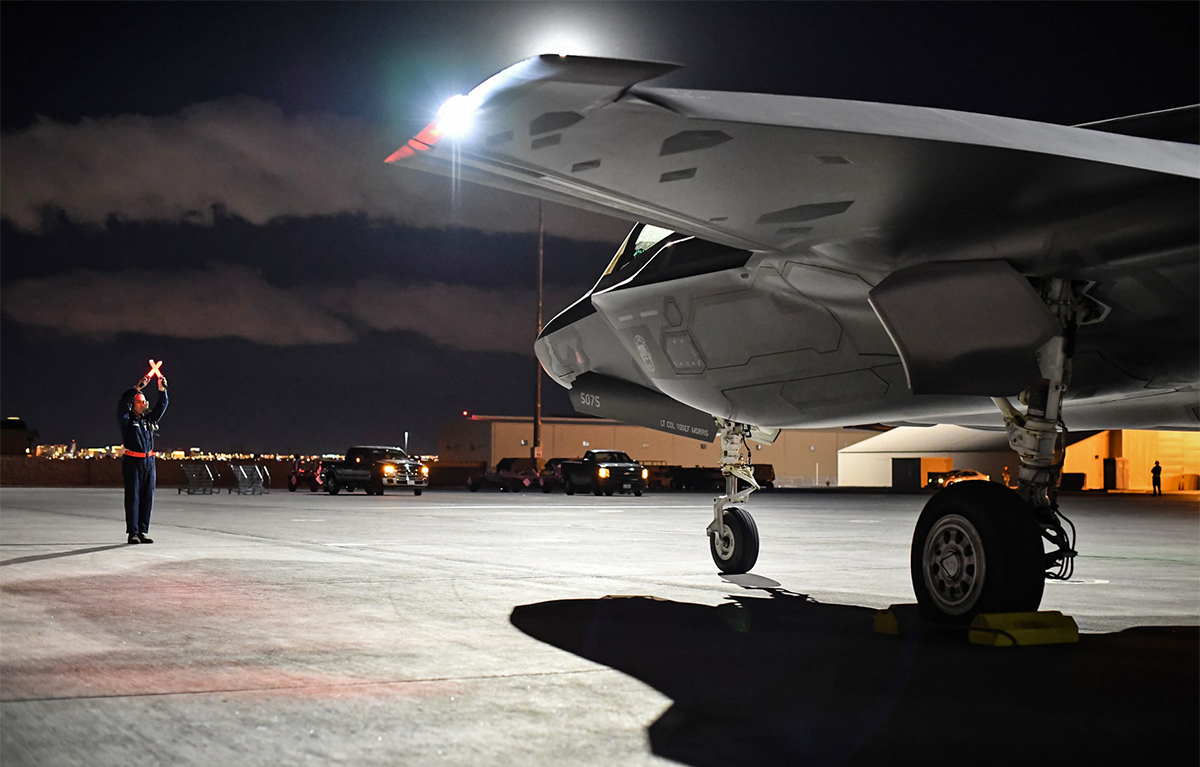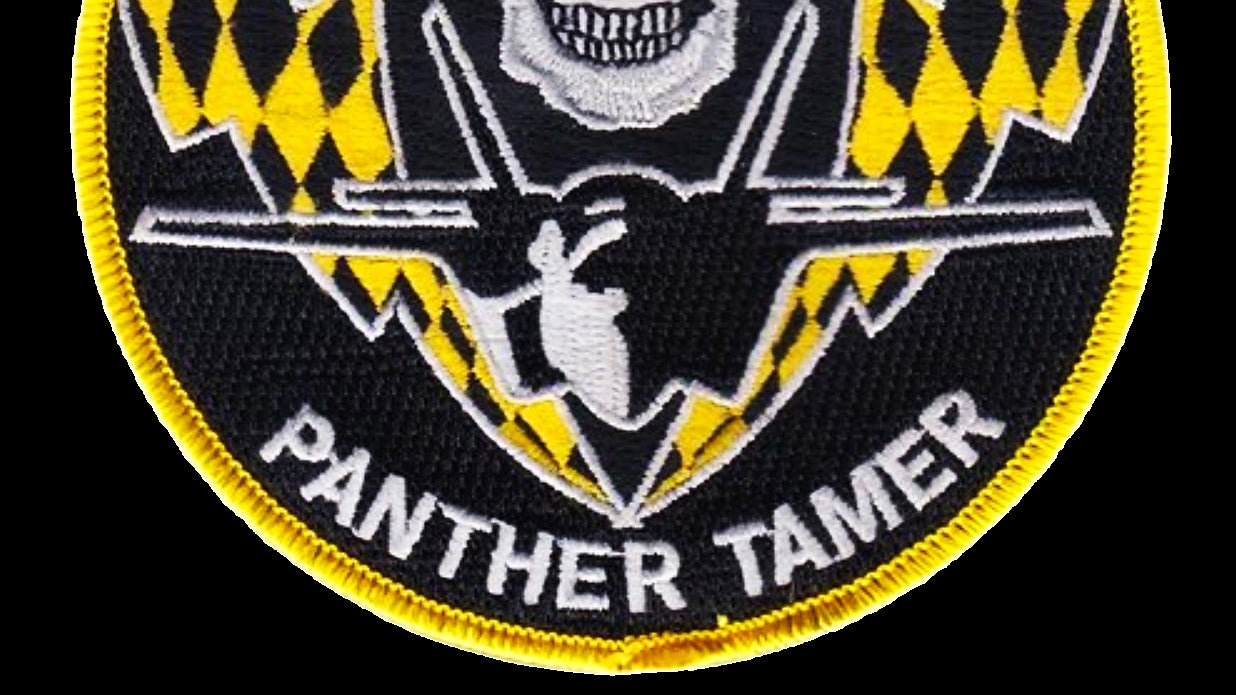It’s Viper for the F-16, Warthog for the A-10, Moose for the C-17, Rhino for the F-4, and the list goes on. The USAF, along with the other services, have long histories of giving their combat aircraft new names, oftentimes of the animal kingdom variety, after the planes had already received their official monikers. This was near certain to be the case for the F-35 Joint Strike Fighter once it was assigned the less than thrilling official name of Lightning II. Now it’s become clear that a new name has caught on for the stealth jet among the top echelons the USAF’s F-35 cadre, and that nickname is ‘Panther.’
The whole Panther nickname investigation started with just a patch—which have proven to be a very rich source of information as of late—from the 6th Weapons Squadron. The insignia was first spotted by our good friend Stephen Trimble of Flightglobal.com. From that point, we decided to investigate the authenticity of the patch and the ‘Panther Tamer’ phrase displayed on it deeper.

The public affairs shop at Nellis AFB worked with us to confirm that the elite unit does indeed call the F-35 the ‘Panther.’
An email from the 99th Air Base Wing Public Affairs reads:
Mr. Rogoway,
The panther patch that you’re inquiring about is an F-35 Weapons School patch that the students wear. Pilots in F-35 community are referring to the jet as “Panther”. As always, the official name of the jet is still F-35 Lightning II.

The fact that Panther has caught on as the F-35’s nickname inside the vaunted hallways and hangars of the USAF’s Weapons School, which is also where a huge part of the service’s tactics development brain trust resides, is telling. If there’s anywhere a new nickname for the F-35 would be born and have a real chance to flourish across the fleet and beyond, it would be there. And judging by the reply above, the nickname may already have spread well beyond Nellis AFB.

The official naming of the F-35 was and remains such a big deal that the F-35’s website retains a page just for it. It reads in part:
In the early days of the F-35 Joint Strike Fighter Program there was a great deal of speculation about what the jet would eventually be named. For months, several potential monikers – like the Black Mamba, Cyclone, Piasa and Spitfire II – were batted about the defense community and hotly debated on aviation blogs around the world.
But, on July 7, 2006, all the guesswork came to an end. At a ceremony at Lockheed Martin’s production facility in Fort Worth, Texas, the U.S. Air Force officially announced that the F-35 would be called the Lightning II. The name pays homage to two venerable fighters of days gone by: the World War II-era Lockheed P-38 and English Electric’s supersonic Lightning, which entered service in the mid-1950s.
At the naming ceremony, then U.S. Air Force Chief of Staff Gen. T. Michael Moseley underscored the historic nature of the Lightning II’s name, saying, “This aircraft represents the fruits of lessons learned over a hundred years of flight and aerial combat. We’re excited about bringing it into our inventory, and warfighters around the globe are excited about flying it in defense of freedom.”

The name Lighting certainly has a rich heritage, but it seems like an overly safe and downright boring title for what supposedly is a cutting-edge stealth fighter built for the masses. Panther is certainly more intriguing, and it feels like a good fit considering the F-35’s greatest strength is its ability to stalk its prey without being detected until it’s too late.
It’s also interesting that the first we are hearing of this nickname is from the 6th WPS, which was stood up to train Weapons Instructors—also referred to as Target Arms—who become masters at employing the F-35 as a weapon system. When and if they graduate from the crushingly tough curriculum, many of these ‘Panther Tamers’ head back to their squadrons to share their expertise with their flying counterparts. So there is already a fairly rapid and far reaching delivery system for this nickname in play. You can read more about what a Weapons Instructor is in this past feature of mine.

The 6th WPS itself was stood up a year ago, but the unit has a very rich heritage dating back over a century. A USAF press release states:
In December 1916, the Signal Corps expanded the number of Aero Squadrons from two to seven because of World War I. The 6th Aero Squadron, as it would later be designated, was first organized in December 1916 at the Army Flying School at Rockwell Field, San Diego, California and then sent to Fort Kamehameha, Hawaii to establish a permanent air presence on the islands.
The squadron remained in Hawaii throughout U.S. involvement in World War I, and was working to improve the integration of air defenses over the island before it lost all if its 18 aircraft in the surprise Japanese attack at Pearl Harbor Dec. 7, 1941. Out of the ashes, the unit was quickly re-equipped with P-40C Warhawk fighter aircraft, re-named the 6th Night Fighter Squadron, and thrust into some of the most harrowing aerial conflict seen anywhere during World War II.
This rich legacy of valor makes the new 6th WPS the ideal home for the Air Force’s newest investment in air dominance; the F-35A Lightning II.
“This squadron has a great history and legacy dating all the way back to World War I,” said Lt. Col. Michael Blauser, 6 WPS commander.
According to Blauser, the squadron will be carrying those time-honored traditions forward as it strives to make some history of its own with the F-35 weapons instructor course curriculum.
The USAFWS currently comprises 18 squadrons and provides the world’s premier postgraduate weapons and tactics employment training. The rigorous USAFWS curriculum, joined together with the F-35A’s state-of-the-art capabilities and the deep-rooted history of the 6th WPS, will produce humble, approachable, and credible weapons officers determined to maintain dominance over future battlefields.
“We’re headed into uncharted waters,” said Col. Michael Drowley, USAFWS commandant. “Every day will require steadfast leadership to ensure our fifth-generation capabilities are as lethal and dominating as possible.”
The 6th WPS is projected to be the USAF Weapons School’s largest squadron by 2023, with 30 instructors and 24 assigned F-35As.
It seems like almost a given that the Panther title will hop its way over to the Navy and Marine Corps as the Grumman F9F Panther ushered in the jet fighter age for those services 70 years ago.

We will keep our ears and eyes open to see where the F-35’s newfound panther moniker pops up next, but it seems like it’s already here to stay, and that’s an exciting thing for the controversial program.
Contact the author: Tyler@thedrive.com
